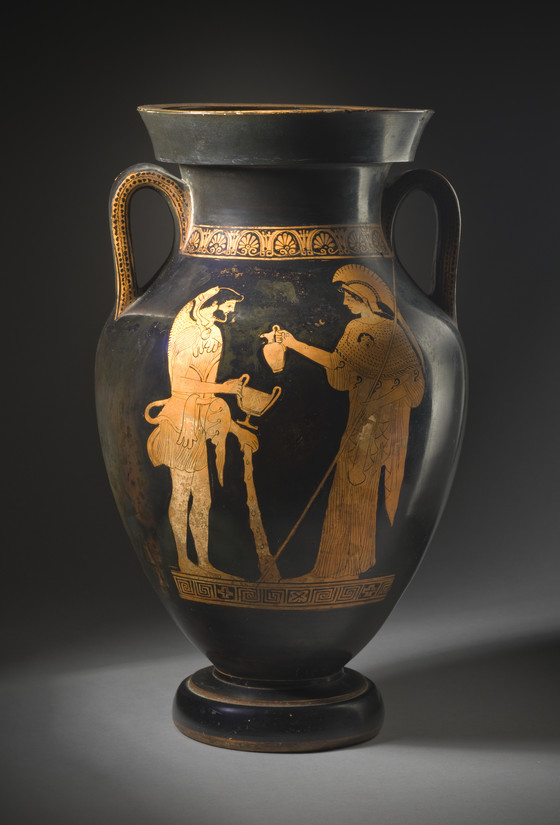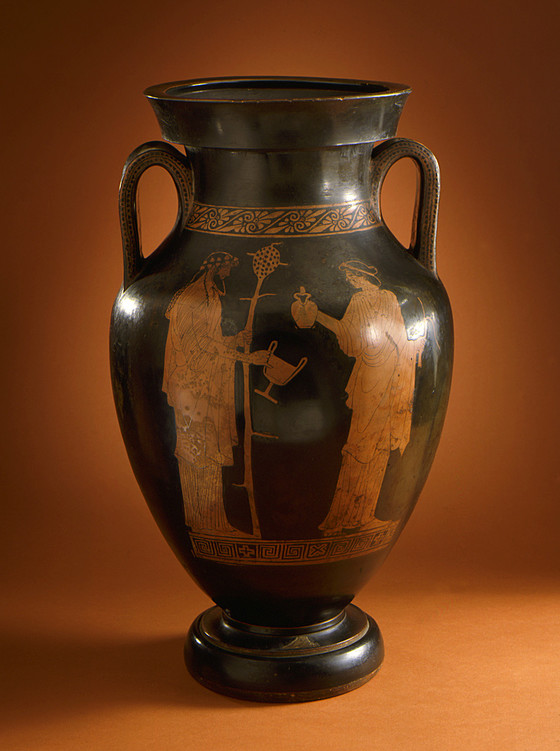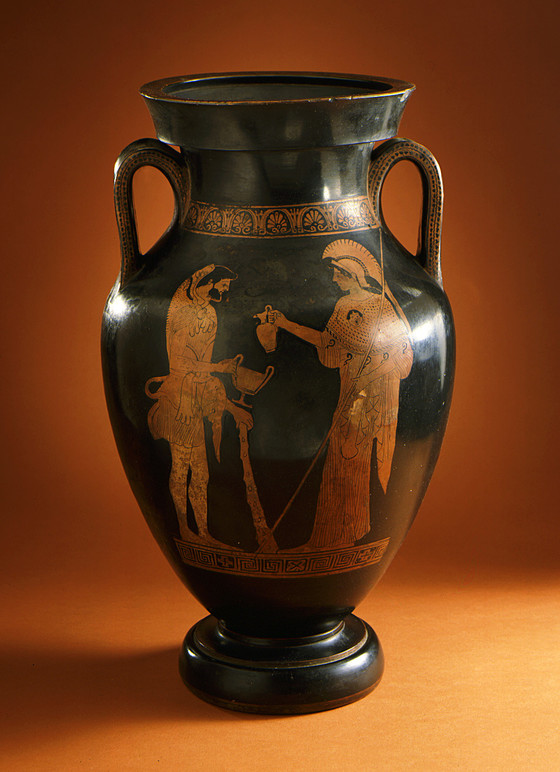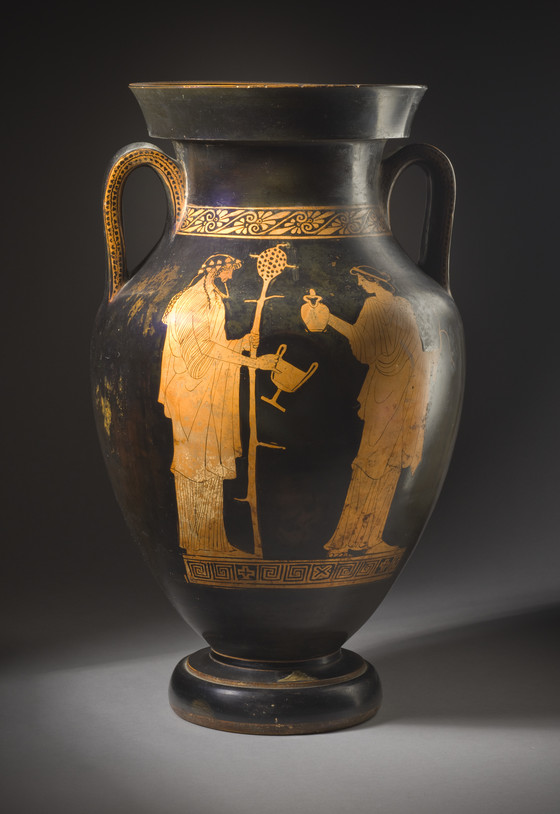The red-figure technique, invented in Athens in the last quarter of the sixth century B.C., is essentially the reverse of black-figure....
The red-figure technique, invented in Athens in the last quarter of the sixth century B.C., is essentially the reverse of black-figure. Rather than painting the figures and ornament onto the plain surface of the vase, their forms are outlined and reserved, and the background is painted black. Additional details - musculature, drapery folds - are then added to the reserved figures. Although the process of firing the painted pot is unchanged, the result is radically different, and Athenian red-figure pottery dominates the market in the fifth and fourth centuries B.C
The vase is decorated with two scenes of divine repose and interaction. On one side, Athena pours wine for Herakles. She holds out a wine jar (oinochoe) and Herakles, wearing his lionskin, holds his kantharos ready. More usually seen wielding his club, here he rests on it. After his death, Herakles joined the gods on Olympus, and there are many vases that depict his introduction to his divine companions. The composition on this amphora appears to be a version of such apotheosis scenes, with Athena welcoming her protégé after the successful accomplishment of his labors. On the other side is another pair. Dionysos, the god of wine, stands upright, wreathed and holding a thrysos, a fennel -stalk topped with ivy-leaves. He holds out his kantharos to receive the wine from his female companion.
Although a number of vases bear the signatures of their painters or potters, by far the majority are unsigned. In his life-long study and attribution of vases, Sir John Beazley (1885 - 1970) had recourse to "nicknames" for the many anonymous vase-painters that he identified, sometimes relating to their pictorial quirks ("Elbows-Out", "The Affecter"), sometimes to a particular scene ("The Swing Painter"), but very often to the location of one example. That is the case with this vase, attributed to the Deepdene Painter. It is his 'name-vase', so called after the location in which Beazley encountered it - Deepdene, the country home of the collector, Thomas Hope (1769-1831). LACMA owns another twenty vases from Hope's renowned collection, purchased by William Randolph Hearst in 1946.
More...



